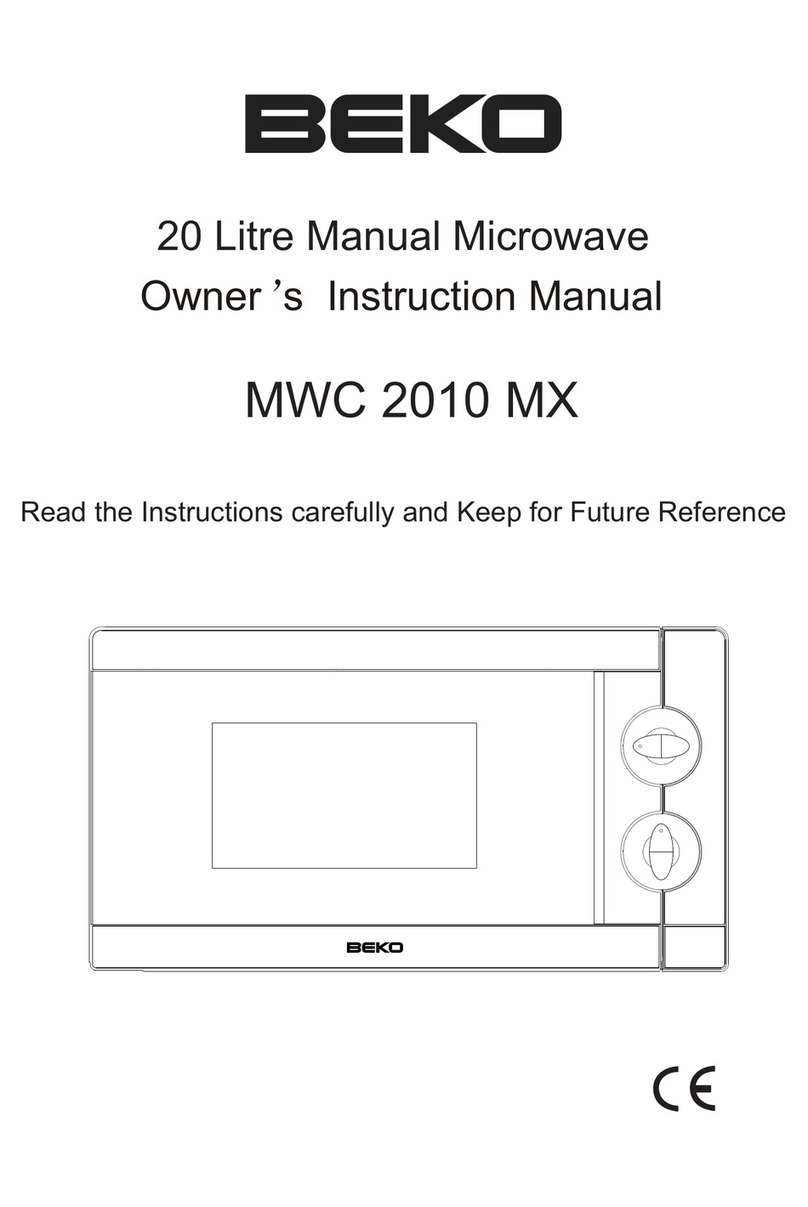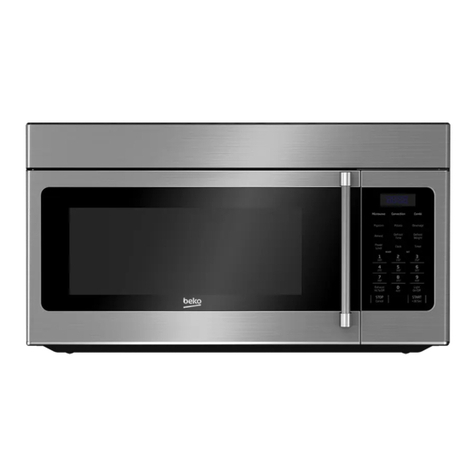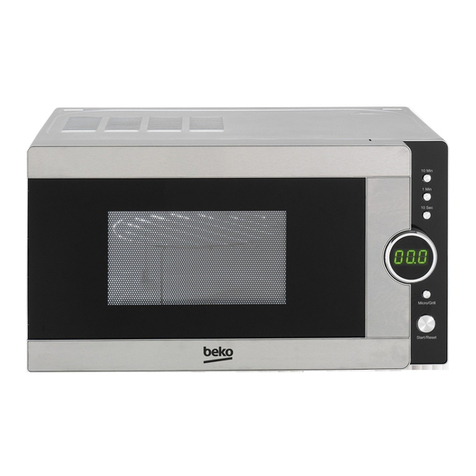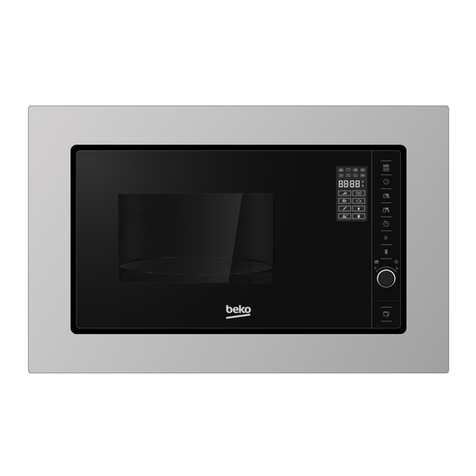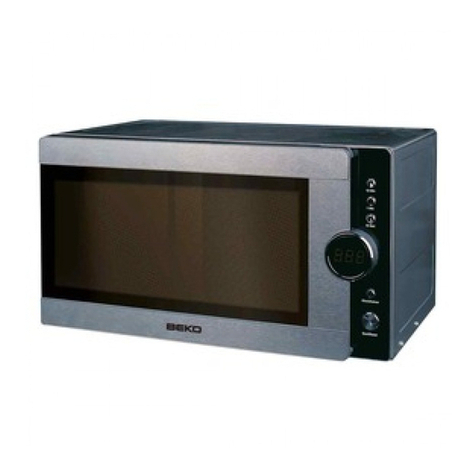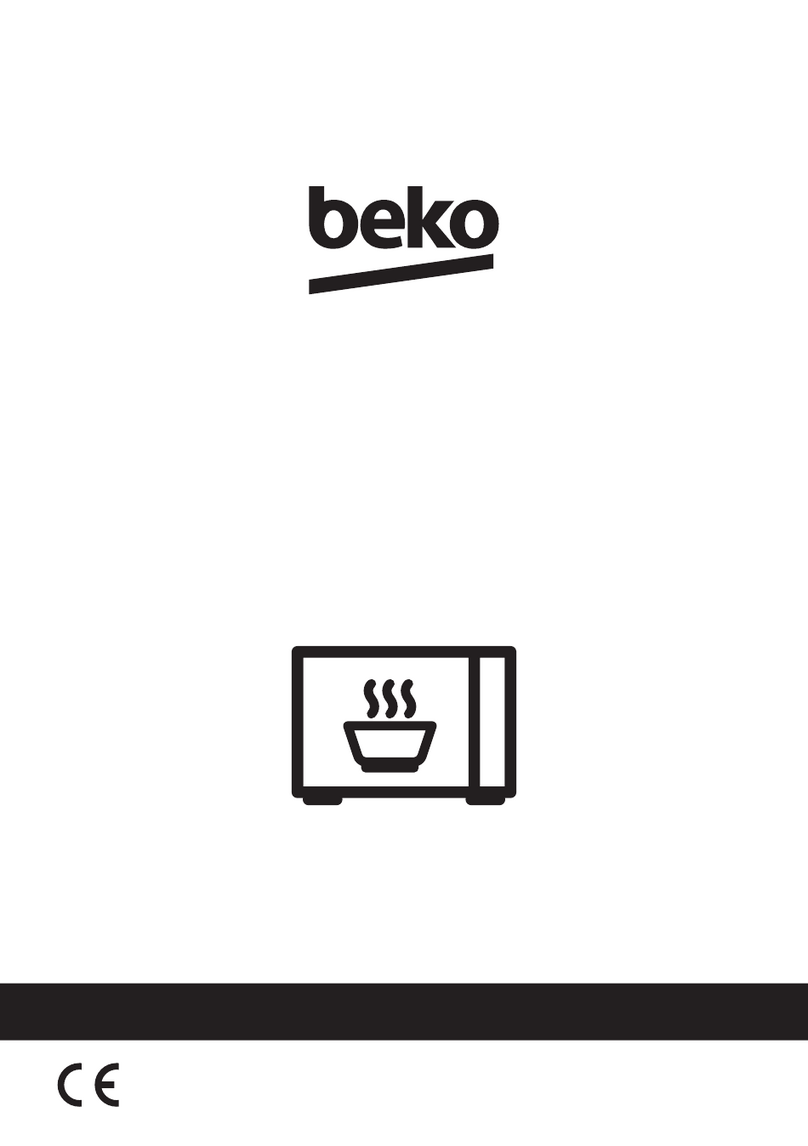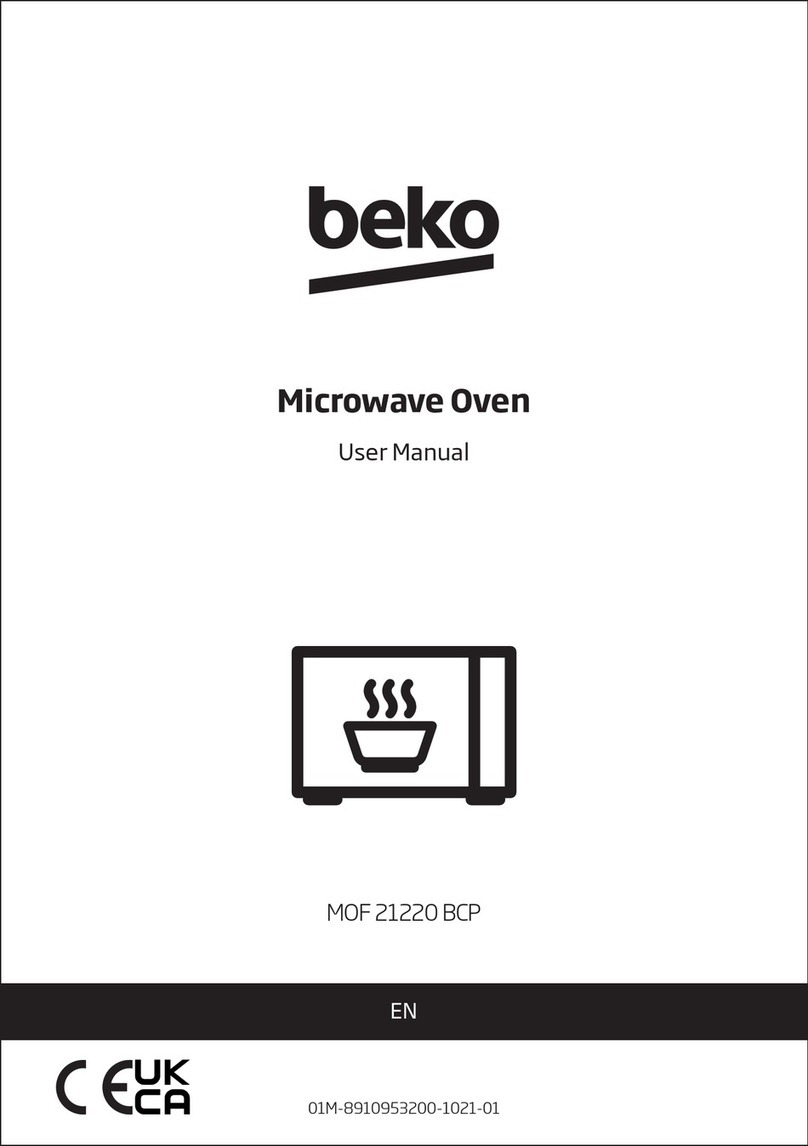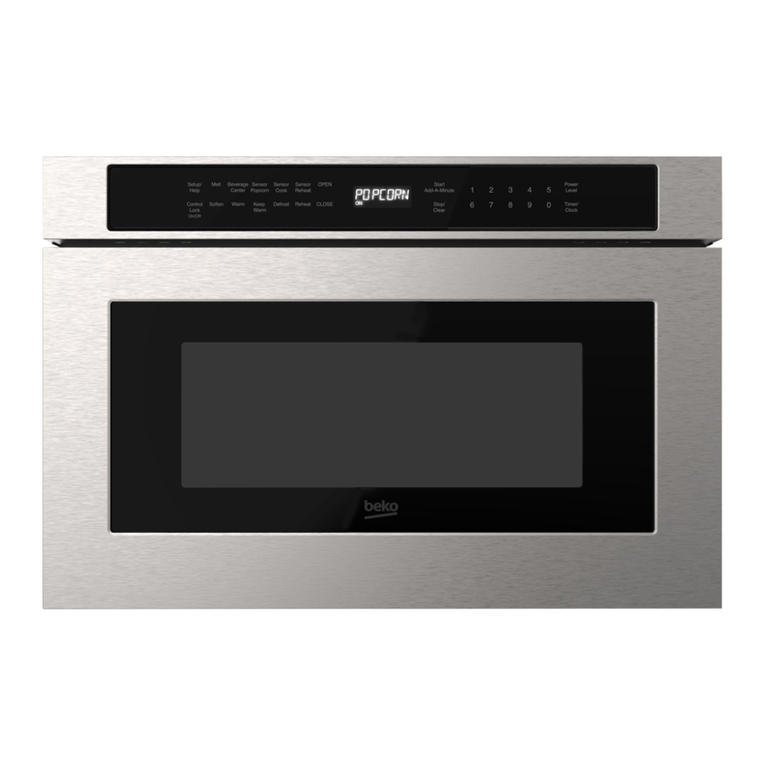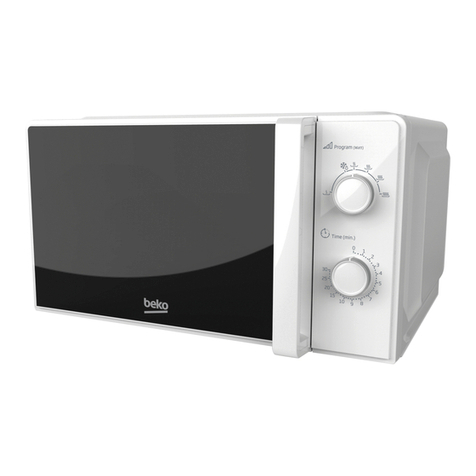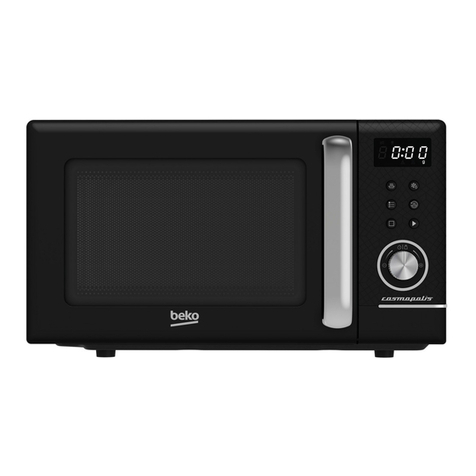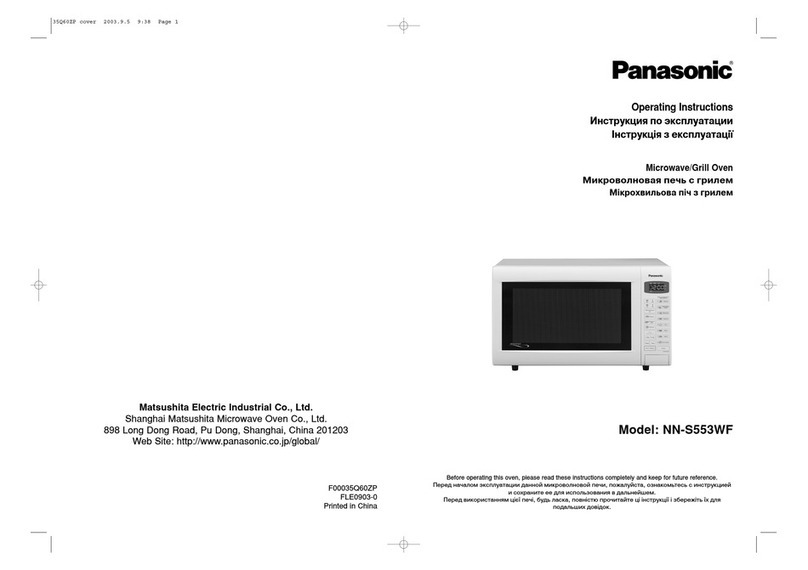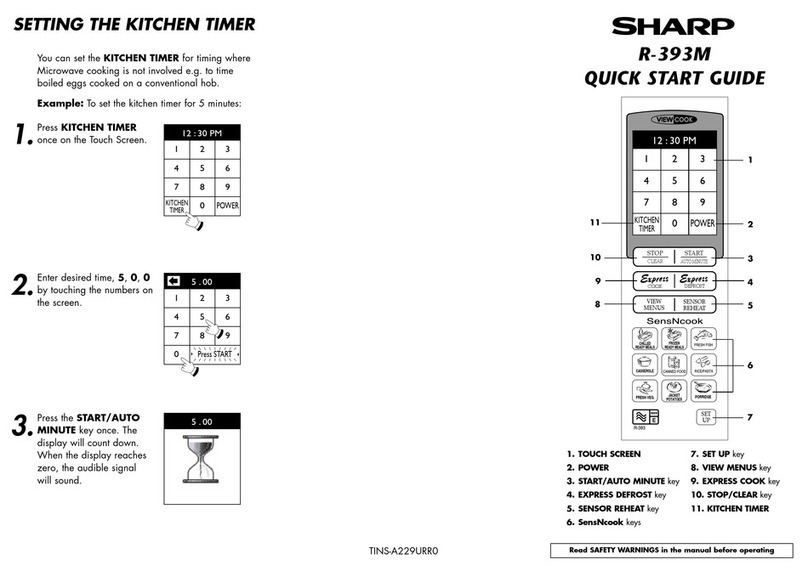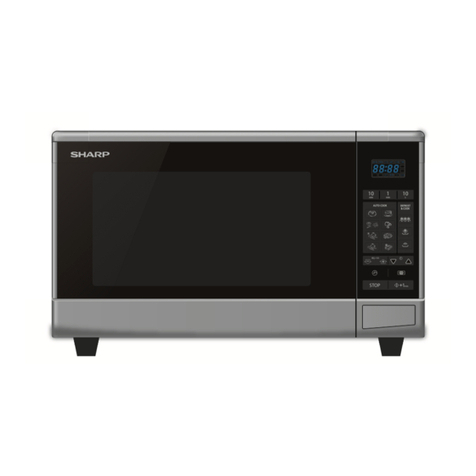CONTENTS
1 Important safety and
environmental instructions 4
1.1 Precautions to avoid possible exposure to
excessive microwave energy..................................... 4
1.2 Grounding instructions..........................................7
1.3 Radio interference.................................................. 8
2 Your microwave oven 11
2.1 Overview....................................................................11
2.2 Technical data.........................................................11
3 Operation 12
3.1 Control panel........................................................... 12
3.2 Before operating................................................... 13
3.3 Manual cooking...................................................... 15
3.3.1 Setting the clock................................................ 15
3.3.2 Setting the timer............................................... 15
3.3.3 Control Lock......................................................... 15
3.3.4 Using the Stop/Cancel key............................ 15
3.3.5 Using the Start/+ 30 sec. key...................... 15
3.3.6 Heating with multiple cooking stages..... 15
3.3.7 Heating with lower power levels................16
3.3.8 Suggested power levels for cooking.........16
3.3.9 Heating with multiple cooking stages..... 17
3.3.10 Suggestions for getting the best results18
3.3.11 Using Ready Set...............................................18
3.3.12 Exhaust High / Low / Off.............................19
3.3.13 Surface Light / On / Off................................19
3.3.14 Setting Defrost by Weight ..........................19
3.3.15 Setting Defrost by Time...............................19
3.3.16 Special notes for defrosting by time ......19
3.3.17 Defrosting tips .................................................19
3.3.18 Defrosting suggestions for meats ..........20
3.3.19 Reheat................................................................. 21
3.3.20 Convection cooking.......................................22
3.3.21 Combination cooking.....................................22
3.3.22 Microwave+convection
combination cooking...................................................22
3.3.23 Convection baking..........................................23
3.3.24 Combination cooking....................................24
3.3.25 Cookware tips ..................................................25
3.4 Auto cooking...........................................................28
3.5 Cooking charts........................................................29
3.5.1 Cooking meat in your microwave................29
3.5.2 Cooking poultry in your microwave ...........30
3.5.3 Cooking eggs in your microwave ................30
3.5.4 Cooking vegetables in your microwave...30
3.5.5 Cooking seafood in your microwave.......... 31
3.6 Demonstration Mode.......................................... 31
4Cleaning and care 32
4.1 Cleaning the exhaust filters.............................32
4.2 Surface light replacement.................................32
4.3 Charcoal filter replacement..............................33
4.4 Oven light replacement......................................33
4.5 Cleaning suggestions .........................................34
4.6 How to Clean the Inside.....................................34
4.7 How to Clean the Outside.................................35
5 Maintenance 36
5.1 Troubleshooting ....................................................36
6 Service instructions 37


